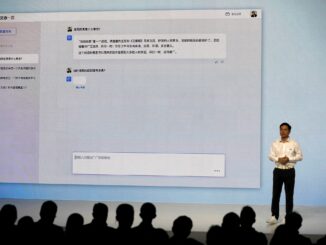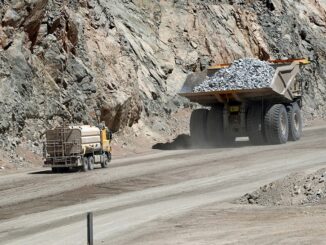
U.S. Treasury Secretary Janet Yellen has revealed that she intends to warn Beijing that its national underwriting for energy and other companies is creating oversupply and distorting global markets when she pays the country an official visit.
“I intend to talk to the Chinese when I visit about overcapacity in some of these industries, and make sure that they understand the undesirable impact that this is having–flooding the market with cheap goods- -on the United States, but also in many of our closest allies, Yellen said in a speech in Norcross, Georgia.
“I will convey my belief that excess capacity poses risks not only to American workers and firms and to the global economy, but also productivity and growth in the Chinese economy, as China itself acknowledged in its National People’s Congress this month,” she added.
Yellen made the comments after visiting Georgia to see a newly reopened solar cell manufacturing plant, which closed shop in 2017 because of stiff competition from factories in China. The factory has, however, re-opened thanks to generous solar and clean energy tax credits in the 2022 Inflation Reduction Act.
A couple of days ago, China filed a complaint against the U.S. at the World Trade Organization, for electric vehicle subsidies arguing the requirements are discriminatory.
China has pumped in more than $50 billion in wafer-to-solar panel production lines, 10x more than Europe, and also controls a staggering ~95% of the world’s polysilicon and wafer supply. Last year, the International Energy Agency warned of the dangers of the world relying so heavily on China’s solar anc clean energy sector.
“The world will almost completely rely on China for the supply of key building blocks for solar panel production through 2025. This level of concentration in any global supply chain would represent a considerable vulnerability,” the agency wrote in a special report.
China is so dominant that it’s now, single-handedly, changing global solar standards: Last year, a Chinese IT columnist declared that large silicons sized between 182mm and 210mm would become the world’s standard thanks to their market share growing from 4.5% in 2020 to 45% in 2021, adding that they would probably increase to 90% in the near future.
Other than heavy investments and subsidies, Beijing has started taking extra measures in order to maintain its leading status and global market share in renewable energy manufacturing. Last year, in a mirror image of what the U.S. has been doing with its semiconductor lithography technology, China amended its rules to ban the export of several core solar panel technologies. Following the ban, Chinese solar manufacturers are forbidden from using their large silicon, black silicon and cast-mono silicon technologies overseas, according to guidelines published by the Ministry of Commerce and the Ministry of Science and Technology.
“China’s export restraints are Exhibit A on the need to rapidly scale American solar manufacturing,” Abigail Ross Hopper, president and CEO of the U.S. business lobby Solar Energy Industries Association, told WSJ after the Biden administration launched the IRA, which has been hailed as a game-changer for the solar sector.
Although China produces more than 80% of the world’s solar panels and modules, solar exports have faced heavy tariffs imposed by the U.S. over the past decade. This has forced some Chinese manufacturers to move their facilities to countries like Malaysia and Thailand in a bid to avoid the tariffs. However, Beijing does not approve this trend because it does not want them to take their core technologies abroad. Technology experts have pointed out that China wants to prevent India from becoming a major competitor and one of the world’s leading solar panel suppliers.
Back in 2011, the U.S. Commerce Department ruled that China was dumping solar panels in the U.S. market and imposed duties on Chinese solar panels a year later. In June 2022, the Biden administration said it would waive tariffs on solar panels imported to the U.S. from Cambodia, Malaysia, Thailand and Vietnam for 24 months after Chinese solar firms moved their operations there. Previously, the U.S. placed tariffs on solar products from these countries and even on Taiwan, a close ally, after it deemed that Chinese manufacturers had moved their operations offshore to evade U.S. tariffs.



